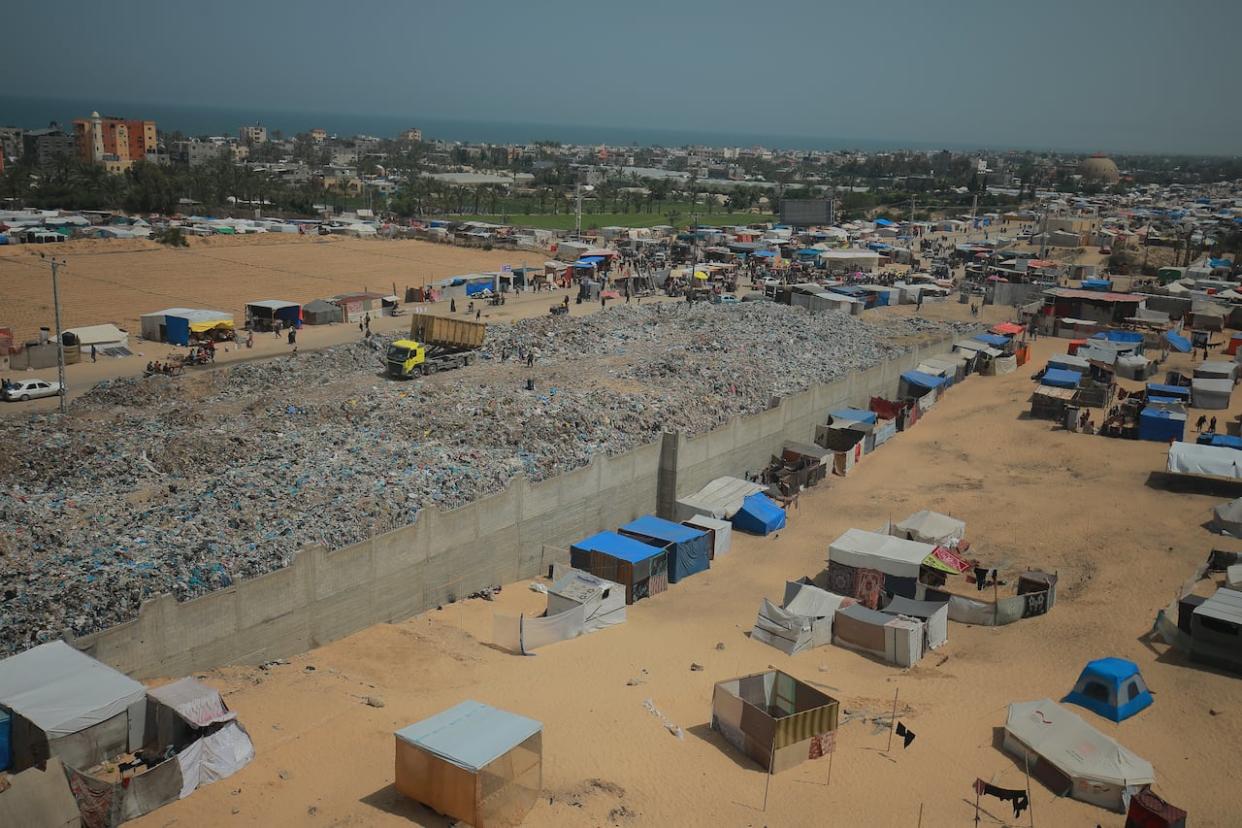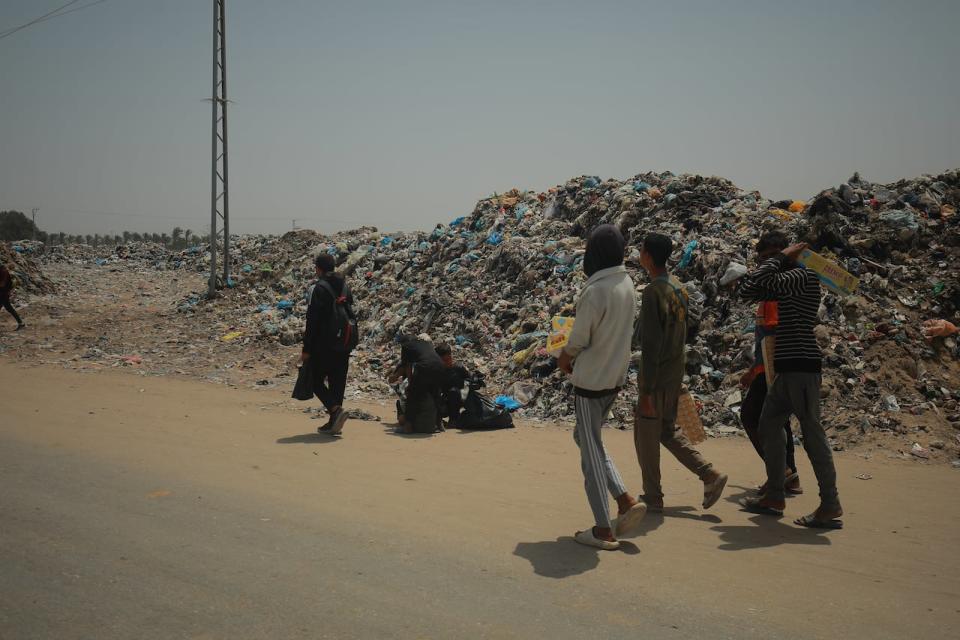Gazans fleeing Rafah say they now live 'in misery' next to garbage dump in Khan Younis

In Khan Younis, where Gaza's Al-Aqsa University once stood, thousands of families say they're being forced to live next to what has become a putrid temporary garbage dump.
Stretching 250 metres, the pile of garbage is longer than Seattle's Space Needle is high. Flies, cockroaches and other bugs are inescapable, as is the unbearable foul smell.
"The situation is indescribable," said Abdullah Tayseer, 48, who moved to Khan Younis with his wife and three children after fighting forced them from their temporary refuge in Rafah.
"All day long we live in misery."
UNRWA, the main United Nations agency in Gaza, estimated that as of Monday, more than 800,000 people had left Rafah since Israel began targeting the city in early May.
Israel said earlier this week it intended to broaden its operations in Rafah despite U.S. warnings about the risk of mass casualties. Many Gazans fled the southern city and made their way back to Khan Younis, about nine kilometres to the north, hoping to set up shelter at the Al-Aqsa University campus — only to find that it had been turned into one of the city's main garbage dumps.
WATCH | Gazans describe living conditions next to garbage dump:
Desperate, tired and faced with limited options, thousands set up camp near the dump, where garbage trucks coming from other camps within city boundaries regularly unload their contents.
The landfill used to be in Sofa, a town east of Khan Younis, but the city — which is responsible for waste collection — said it had to be moved to a more central area that would be easier to access as the war dragged on.
They chose the vacant university campus, where most of the buildings have been destroyed during the conflict.
'The centre of the displaced'
Mohamed Al-Farra, an environmental engineer with the city, said the university was chosen because it was the largest space available at the time and "the furthest place from people."
However, as people flooded back into Khan Younis, Al-Farra told CBC News that the dump "is now the centre of the displaced."
He said the trash greatly affects the spread of disease and vermin.
"The displaced tell us that they've seen roaches that they've never seen in their lives."
Muhammad Abu Aser, 44, said he pitched his tent near the dump after he and his family were forced to leave Rafah because they couldn't find anywhere else to go.
"We are forced to stay near garbage," he told a freelance videographer working with CBC News in Gaza. "We're just trying our best to live."
Health consequences
People can face a number of health problems if they live in areas without proper garbage disposal because trash can contaminate air, soil and water, according to the World Health Organization. Vulnerable groups like children are at increased risk of adverse health outcomes.
A 2021 study found health consequences for people living near landfills, incinerators or dumping sites in Europe, Asia, Africa and North America included infectious diseases, respiratory conditions, cancer, birth defects and gastrointestinal illness.
Abu Aser and Tayseer both believe their proximity to the landfill is affecting their children's health.
"The kids are all sick … their stomachs hurt," said Tayseer, who is originally from the north part of the Gaza Strip.

People walk past a garbage dump in Khan Younis on Wednesday. Families who fled Rafah, further south, say they have few other options but to live in tents next to the waste that attracts insects and gives off a foul smell. (Mohamed el Saife/CBC)
Israel attacked Gaza following a Hamas-led Oct. 7 attack on southern Israeli communities that killed 1,200 people and saw more than 250 taken hostage, according to Israeli tallies. Gaza health authorities say Israel's responding assault has killed more than 35,000 people, with thousands more feared buried under the rubble.
Aid groups say health conditions in the Gaza Strip are already dire as hundreds of thousands of people pack into the crowded, unsanitary camps, noting that women and children have particularly struggled with poor living conditions.
Al-Farra says the city will only be able to move the dump back to its original location if the war ends and access to the old site is restored.
Back at his tent, Abu Aser says he and his family have nowhere else to go until the war is over.
"We can't handle a war," he said. "We can't handle anything anymore."


